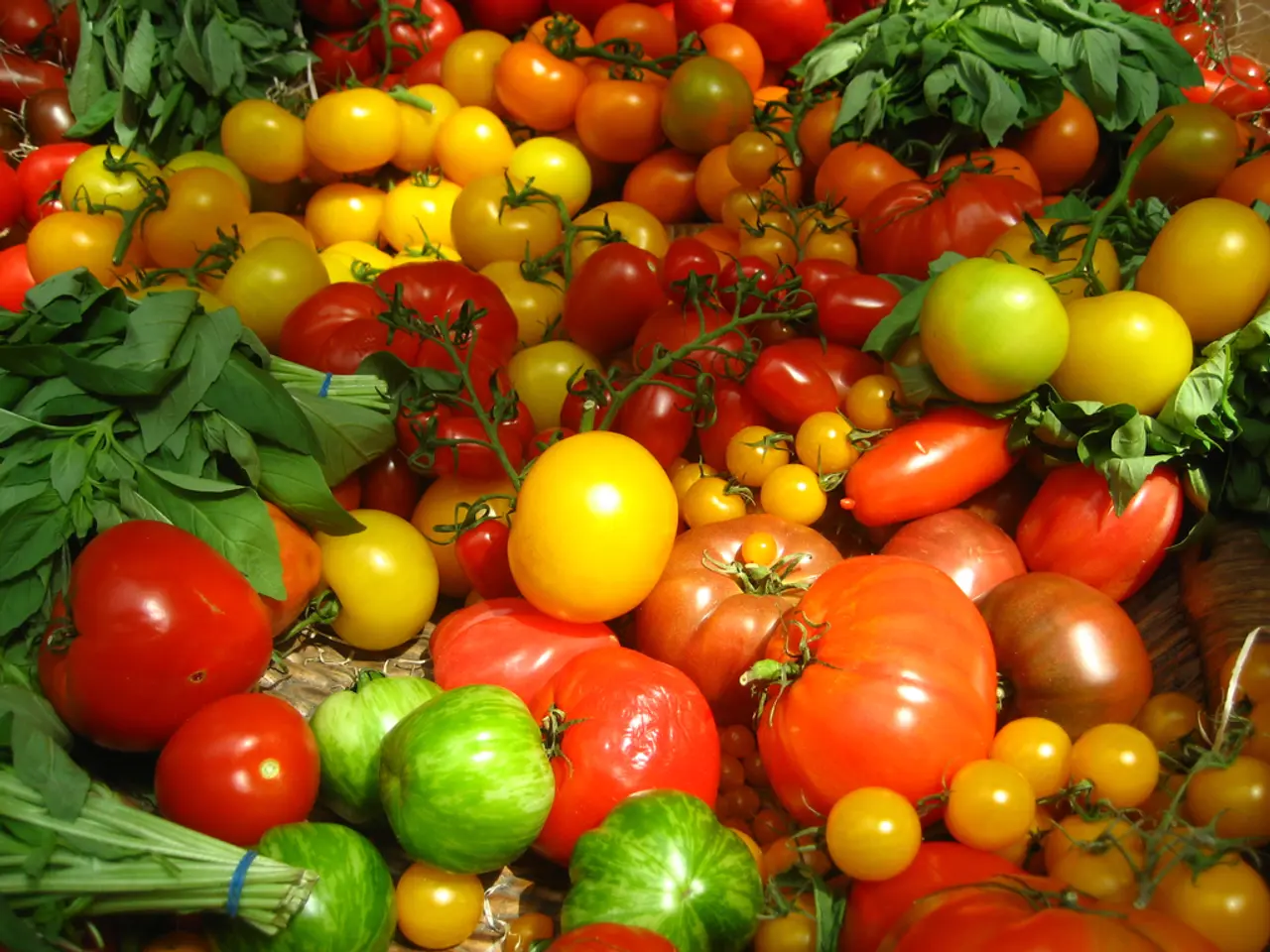September Harvest: Ready-to-Gather Produce for the Month
**Harvesting and Preserving Your September Crops**
As the autumn leaves begin to fall, so does a bounty of fresh produce. Here's a guide on how to harvest and preserve seven crops that are at their peak in September:
**Autumn-Fruiting Raspberries**
These sweet berries can be picked up until the first frosts. Enjoy them fresh or freeze them for winter consumption. After the harvest, cut down all canes in February.
To freeze raspberries, spread them out on a baking sheet and place it in the freezer. Once frozen, transfer them to airtight containers or freezer bags. Alternatively, make jam or preserves using the fresh berries.
**Apples**
Store apples in a cool, humid environment, such as a root cellar or refrigerator. Keep them away from strong-smelling fruits to prevent absorption of odors. Ensure good ventilation to prevent moisture buildup, which can lead to rot.
**Onions**
Before storage, dry onions in a warm, dry place with good air circulation. This process helps remove excess moisture, crucial for long-term storage. Store cured onions in a cool, well-ventilated area, in mesh bags or baskets.
**Runner Beans**
Blanch runner beans for about 2-3 minutes, then immediately submerge them in an ice bath to stop the cooking process. Once cooled, they can be frozen for later use. Alternatively, use a pressure canner for low-acid vegetables like runner beans to ensure they are safely sterilized and sealed.
**Tomatoes**
Acidic tomatoes can be canned in a water bath, while low-acid tomatoes require a pressure canner. Core and chop tomatoes, then freeze them in airtight containers or freezer bags. You can also make sauces or soups and freeze them.
**Courgettes (Zucchini)**
Slice or grate zucchini and blanch it in boiling water for about 2-3 minutes. Then, immediately submerge it in an ice bath to stop the cooking process. Once cooled, it can be frozen. Alternatively, slice zucchini thinly and soak it in a vinegar-based brine to create pickles.
**Potatoes**
Cure potatoes in a dark, cool place with high humidity to form a protective skin. Store cured potatoes in a cool, dark place with good ventilation, keeping them away from light to prevent greening.
**General Tips**
- Remove any debris or damaged produce before storage to prevent contamination and spoilage. - Use appropriate packaging materials for each crop. - For long-term storage, consider using a root cellar or a cool, humid environment to maintain optimal conditions for the crops.
Many crops reach their peak for harvesting in September. To ensure a successful harvest, keep on top of courgette harvests to avoid sudden marrows, and pick runner beans when they are small and tender to avoid stringiness. For tomatoes, allow them to ripen this month, and if they are still green, remove the foliage to allow the sun to reach the fruits.
For more delicious ways to cook your potato harvest, visit BBC Good Food. For guidance on harvesting courgettes and tomatoes, watch Monty's guide. Happy harvesting!
Start preparing your home-and-garden for the upcoming season by preserving your September crops. After harvesting autumn-fruiting raspberries, consider transforming some of them into a homemade home-gardening project like jam or preserves for a delightful lifestyle addition to your pantry.




